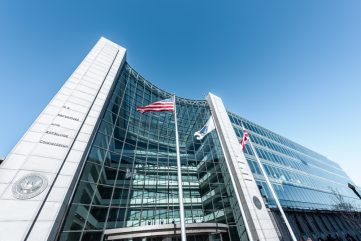
For years, AI has been portrayed as something regulators fear, a technology advancing faster than policy can keep up. But a closer look at new legislative frameworks tells a different story. From the EU AI Act to the CSRD and the SFDR, regulators are beginning to embed it into the compliance ecosystem, rather than reject it.
These frameworks are built on the assumption that organisations will use AI, not as a luxury, but as a necessity. The scale and speed of regulatory reporting today simply outstrip what manual processes can deliver. Whether it’s ESG metrics under the CSRD or data lineage requirements under the AI Act, the underlying expectation is that automation will underpin reliability, traceability and consistency.
The shift from prohibition to proof
Regulatory language has matured. Earlier AI debates were dominated by risk narratives: concerns around bias, opacity and safety. The new generation of regulation reframes those risks as governance challenges, not reasons for avoidance.
For example, the EU AI Act doesn’t outlaw ‘high-risk’ systems. It regulates them into reliability by demanding audit trails, human oversight, and explainable decision-making. In that sense, the intention of the regulation is not focused on constraining innovation but ensuring that it stands up to scrutiny. The direction of travel is clear: transparency, accountability, and verifiability are becoming the price of market entry. In other words, regulators no longer fear AI’s complexity – they expect firms to master it.
Manual compliance is becoming a liability
Many organisations still treat compliance as an annual reporting exercise rather than a live operational discipline. But with regulatory expectations expanding in both scope and frequency, manual data gathering and spreadsheet-based workflows have become a structural weakness.
Under frameworks like CSRD and SFDR, companies must now produce granular, auditable data across multiple subsidiaries and jurisdictions. That level of precision isn’t compatible with disconnected systems or last-minute reporting scrambles. Manual compliance isn’t just slow, it’s opaque, and opacity is exactly what regulators are targeting.
Those still relying on manual methods may believe they’re reducing exposure by limiting automation, but in reality, they’re creating more risk, not less. Without clear data lineage or automated audit trails, it becomes harder to demonstrate compliance when challenged. Regulators are increasingly asking not just for the report, but for the system that produced it.
Early adopters are setting the new standard
Forward-looking organisations have already begun to embed AI-driven tools into their compliance architectures. These early adopters are discovering that automation isn’t merely about speed, it’s about resilience and defensibility. Automated systems can flag anomalies, enforce version control, and maintain continuous data integrity in ways human teams simply can’t at scale.
This shift is also reshaping the compliance function itself. Rather than acting as reactive rule-checkers, compliance teams are becoming architects of data governance, designing frameworks that make real-time transparency possible. The use of AI for these purposes is rapidly becoming the industry standard.
Firms that move early are setting benchmarks that others will soon be required to meet. They are faster in disclosure, cleaner in their data, and stronger in audit readiness. In a world where trust increasingly determines access to capital, those qualities translate directly into competitive advantage.
AI as the foundation of compliance
The regulatory conversation around AI has changed from compliance experts asking themselves, ‘Should we allow it?’ to ‘How should we rely on it?’ That’s a subtle but profound shift. The future of compliance isn’t manual, and it isn’t optional. It’s automated, explainable, and governed by evidence-based systems that regulators themselves now expect to see in place.
We’re watching AI become the regulator’s ally, and the firms that recognise this will not only meet compliance standards more efficiently, but also help define what responsible, transparent AI use looks like across high-stakes industries.
Seb Kirk is the CEO and co-founder of GaiaLens






